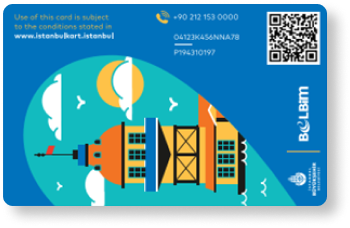
Göreme National Park and the Rock Sites of Cappadocia
Cappadocia is full of wonderful places to visit, amazing things to see, and incredible food to taste! In this article, we are going to look at the amazing rock formations of Cappadocia in Göreme National Park. This amazing place is on the UNESCO World Heritage list for its authentic natural formations. Before we start looking closely at this world heritage area, let us share an easy way to share an opportunity to save time & money in your Cappadocian journey.
Cappadocia Travel Pass® is created by a 25+ year experienced tourism firm to fulfill your Cappadocia dream for less and with ease. The Pass gives you access to 35+ amazing attractions, experiences, special discounts, and more. From a discounted hot air balloon ride to free entrance to Goreme Open Air Museum, you are all covered with this completely digital Pass. To compare for yourself, click here. Now, let’s go back to Göreme National Park!
About Göreme National Park
Göreme Valley and its surrounds have rock-hewn sanctuaries that offer rare proof of Byzantine art in the post-Iconoclastic period. This stunning environment was fully carved by erosion. There are also dwellings, troglodyte villages, and underground settlements, which are relics of an ancient human home from the fourth century.
Located in central Anatolia within a volcanic landscape sculptured by decay to form a sequence of mountain peaks, valleys, and structures known as “fairy chimneys”, Göreme National Park and the Rock Sites of Cappadocia cover the region between the towns of Ürgüp and Avanos, the sites of Karain, Karlık, Yeşilöz, Soğanlı and the underground cities of Kaymaklı and Derinkuyu. So it is a huge area.
Erciyes Mountain and Hasan Mountain, two ranges of extinct volcanoes, form the area's southern and eastern boundaries. It is one of the most impressive and substantial cave-dwelling complexes in the world due to the density of its rock-hewn cells, churches, troglodyte towns, and underground cities within the rock formations. Cappadocia is one of the best examples of the post-iconoclastic Byzantine art period while being fascinating from a geological and ethnographic perspective because of the extraordinary beauty of the decor of the Christian shrines.
Home of First Signs of Monastic Activity
The first indications of monastic activity in Cappadocia are thought to have appeared in the 4th century, when small anchorite groups moved into cells hewn out of the rock in accordance with the teachings of Basileios the Great, Bishop of Kayseri. Later, they began uniting to form troglodyte communities or underground towns like Kaymakli or Derinkuyu that functioned as safe havens in order to stave against Arab invasions.
Throughout the iconoclastic period between 725-842, Cappadocian monasticism was already well established as evidenced by the ornamentation of numerous sanctuaries, which retained a rigorous minimum of symbols, most often sculpted or tempera-painted crosses. Nonetheless, many rupestral churches were excavated in Cappadocia after 842 and lavishly embellished with colorful figurative paintings. Tokal Kilise and El Nazar Kilise from the 10th century, Sakli Kilise and St. Barbara Kilise from the 11th century, and Elmali Kilise and Karanlik Kilise from the Göreme Valley are some examples.
Harmony of Humans with Nature
The Göreme National Park and the Rock Sites of Cappadocia are harmonious landscape that combines human interaction and settlement with striking natural formations despite having been extensively exploited and altered by man for ages. Several of the cones and pillars have seen some earthquake damage, however, this is thought to be a naturally occurring occurrence. Sadly, there have been reports of excessive tourist use, some vandalism, and the introduction of certain inappropriate constructions.
New fairy chimneys and rock pillars will continue to be built by the same erosional processes that produced the distinctive conical rock structures, but due to the speed of this process, the property's natural qualities may still be in danger from unsustainable use. Cultural landmarks, such as rock-carved churches and other comparable monuments, are irreplaceable and are mostly at risk of being destroyed by erosion and other harmful natural processes, as well as pressure from urbanization.
Cappadocia: the One and Only
Cappadocia is an amazing place and according to the UNESCO World Heritage List criteria, the region satisfies the requirements for authenticity since the cultural and natural qualities specified in the inscription criteria are properly represented by its values and their attributes, including its historical setting, form, design, material, and workmanship.
The underlying morphological structure and the challenges associated with handling the material inhibited the builders' creative impulses because of the technical challenges of building in this area, where it is necessary to hew out structures within the natural rock, creating architecture by the removal of material instead of by putting it together to form the elements of a building. Over subsequent eras and civilizations, this molding of human effort by environmental conditions stayed largely unchanged, affecting the cultural attitudes and technological prowess of each succeeding generation.
The Best Way to Discover Cappadocia
Amazingly unique, breathtakingly beautiful Cappadocia is here for you to discover and fall in love! There are many things to see and experience in the region and that is the reason why we have created Cappadocia Travel Pass®. The Pass includes 35+ attractions from all over the region. Want to have a hot air balloon ride? You can have with at a great discount. What about underground cities? You can visit Derinkuyu, Ozkonak, and Kaymakli Underground cities for free! What about daily tours? Here you can join the famous Red Tour which we call the ‘Wonders of Cappadocia’ tour. Click here and compare for yourself. Buy today and let’s meet in Cappadocia this year.
FAQ
Why is Cappadocia so famous?
The region of Cappadocia is famous for its unique rock formations, rich history, underground cities, and picturesque hot air balloon rides. This historic area, which is located in Central Anatolia, draws large numbers of visitors from all over the world.
What is the best month to visit Cappadocia?
The months of April through mid-June are ideal for travel to Cappadocia. The region experiences warm days, blooming vegetation, and little rainfall in the spring and early summer. The most affordable months to travel to Cappadocia are November through January. In Cappadocia, September and October are also great times with fewer tourists.
Is it safe to travel to Cappadocia now?
Cappadocia is a pretty safe place to travel in terms of crime. While there are instances of small crime, it's usually not an issue for visitors. In Cappadocia, robberies and assaults are uncommon, and typically they are not directed at tourists. You’ll feel safe in Cappadocia.
Is Cappadocia colder than Istanbul?
The typical temperature of Istanbul on a cold day, which is coastline but in the north, is 11°C. With typical temperatures of 6-7°C, inland regions like Cappadocia are significantly colder.




 Travel around Istanbul freely
with Public Transportation Card
Travel around Istanbul freely
with Public Transportation Card
Buy your unlimited Istanbul Public Transportation Card now. We deliver it your hotel before you arrive.





Latest Posts

Why Should You Visit Cappadocia? Updated for 2023
Have you ever wondered where all those lovely photographs of a valley seen from a hot air balloon originate from? Cappadocia, tucked right in the heart of Turkey's Anatolia region, is one of the country's tourism centers, despite its tiny size. And w...

Cappadocia: Hot Air Balloon Flight Guide 2023
Have you ever wondered what it feels like to fly? To float among the birds in the sky and enjoy a bird’s eye view of the gorgeous surroundings around you? Hot air balloons in Cappadocia, Turkey provide just that and more – all the while delivering an...

Underground Cities of Cappadocia
The ancient underground cities of Cappadocia may strike the interest of even the most claustrophobic person! Every year tens of thousands of tourists around the world visit Cappadocia to discover these mysterious caves and learn about their history. ...

How far is Cappadocia from Istanbul?
The distance between Cappadocia and Istanbul is around 730 km (454 miles). This may seem like a lot but think about all the adventures you will experience once you arrive! Furthermore, there are many ways to get there and you will surely find one tha...

Top Things to Do in Cappadocia
Wondering about things to do in Cappadocia? Trying to arrange your trip but there are many question marks. Cappadocia Travel Pass® provides over 25 attractions, with just one pass – so book yours NOW! Here is a list of the main must-do activities but...

The Top 20 Amazing Cave Hotels in Cappadocia
Looking for a unique, one-of-a-kind place to stay in Cappadocia? Why not try a cave hotel? There are plenty of incredible cave hotels in Cappadocia that maintain the region’s history while providing a uniquely modern experience.&n...

Everything About Ihlara Valley
Ihlara Valley, which can be mistakenly written as Ilhara Valley, is a canyon with a depth of around 120 meters and was created by the Melendiz River thousands of years ago. To enjoy this amazing natural beauty, Cappadocia Travel Pass offers yo...

The Top 18 Reasons to Visit Cappadocia
There are many reasons to visit Cappadocia, from its amazing natural beauty to the warm and welcoming natives. Here, you can find 18 reasons to visit Cappadocia! Planning your Cappadocia trip can be exhausting since you may see many different ...

Cappadocia From İstanbul
Istanbul is Turkey’s most crowded city and it has many cultural values because of the historical background of the region. Tourists mostly prefer to start their Turkey journey from İstanbul because of these facts. The distance between Istanbul and C...

Whirling Dervishes Sema Ceremony in Cappadocia
The term "sema" has Arabic roots. It can mean two things. The sky is one, and listening is another. It eventually came to be known as one of the dhikr rituals the Sufis, who practiced Sufism, did by rotating themselves around to the accompaniment of ...

4.8 out of 5 stars
Cappadocia Travel Pass has an average rating of 4.8 /5 from 1079 reviews
Read all traveler reviews →